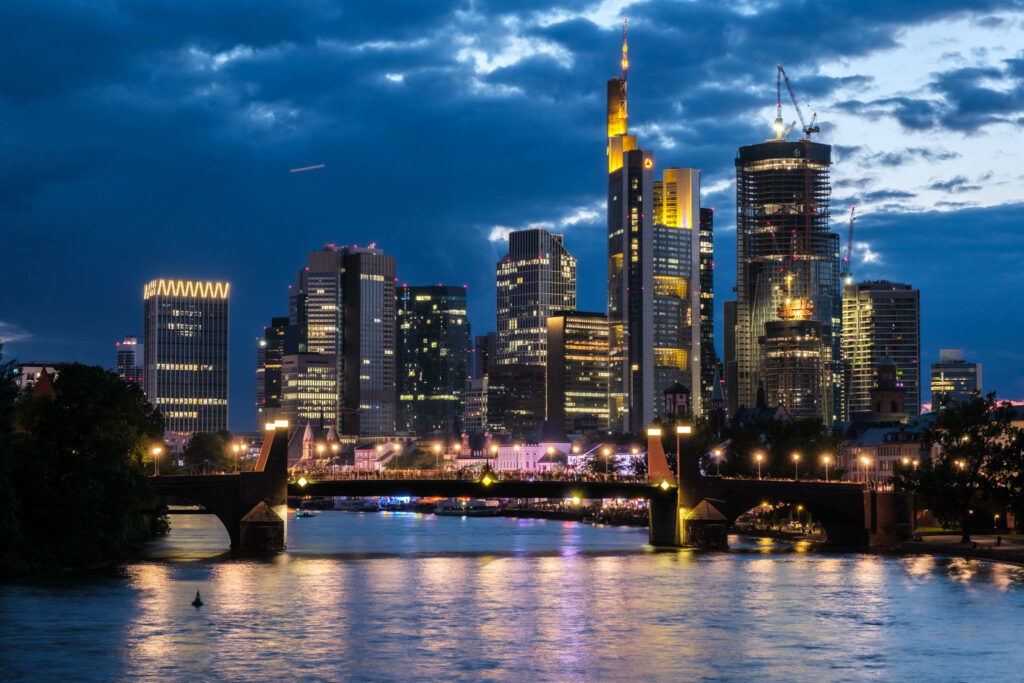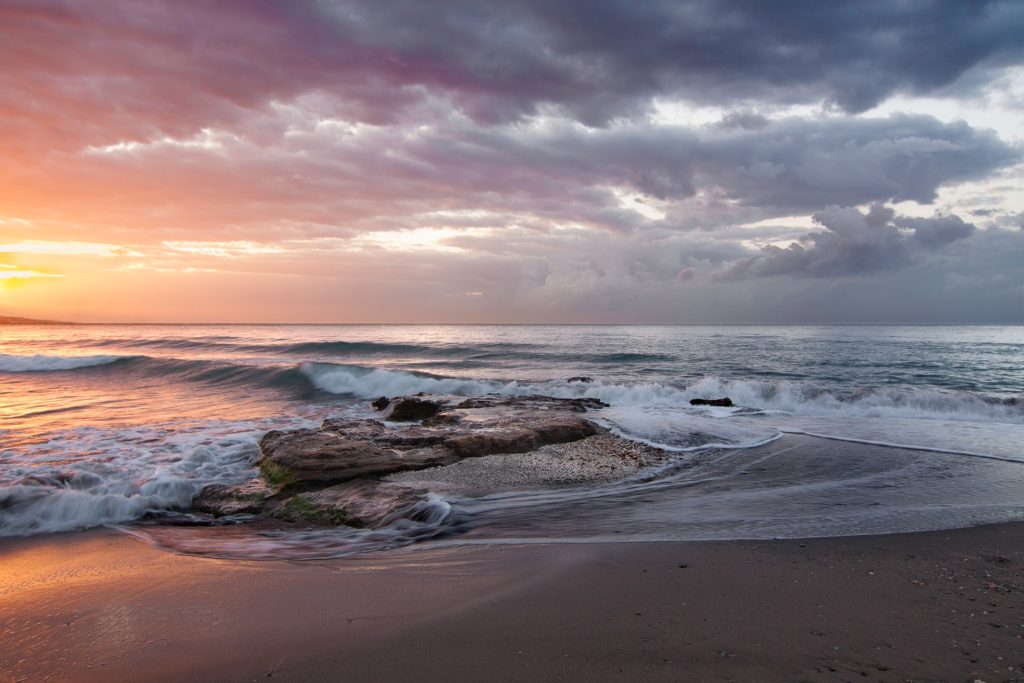One of the most powerful and engaging genres of landscape photography is taking mountain images. Whether from low down looking up or atop a mountain looking down, mountain shots have a way of provoking an emotional response in all of us.
However, for many of us, mountain landscape photography can be challenging both mentally and physically. By their very nature, mountains are inaccessible, wild, desolate places prone to rapid and potentially dangerous weather changes.
Mountain photography requires more understanding of the location and the light than many other genres. That understanding will help you capture amazing mountain shots. So let’s take a look at 17 tips for epic mountain landscape photography.
Preparation is Key
Nature photography, and in particular mountain landscape photography, requires a deep understanding of the environment around you. It’s not for the uninitiated or unfit. If you are going to climb up jagged mountains, you need to do so not only with the right camera gear but also with the right equipment and knowledge.
Making people aware of your plans is also an important consideration. If stormy weather should trap you, it’s vital that people know where to find you. Always check the weather forecast before you go up the mountain.
That said, as we have alluded to earlier, not all mountain photos require you to climb up mountains. You can get equally great shots from sea level, especially when you have a great foreground such as a lake.
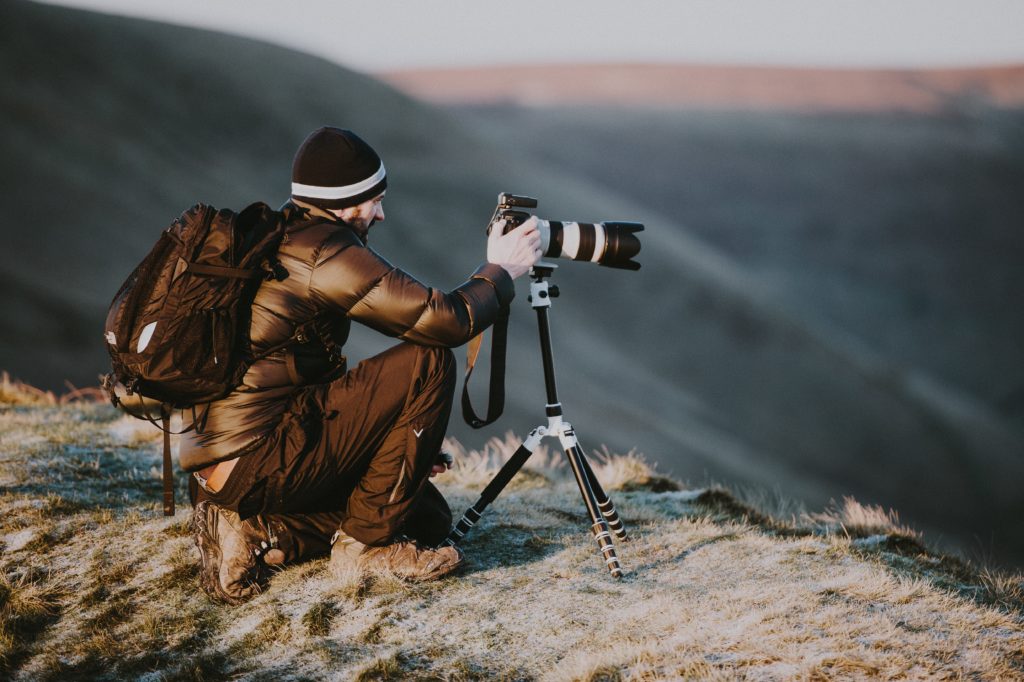
Research Your Location
If you can, go to your chosen location in advance of the actual shoot. A good landscape photographer will scout their locations, often in the middle of the day. This not only helps understand the route up to the shooting location but also the different compositions available from the locations.
It’s not always possible to scout your mountain landscape in advance. However, with tools such as Google Earth and Apple Maps, we can zoom into satellite imagery of the location. Combine these with ephemeris apps (discussed later), and we can get a very good idea of where the best shots will be.
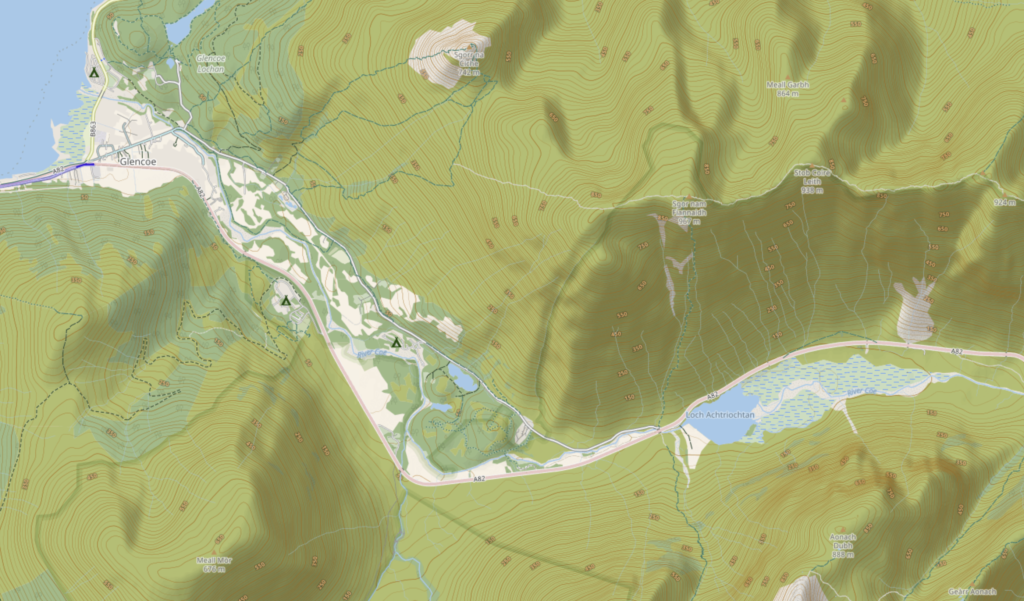
Take a Telephoto Lens
Whilst it seems obvious to take a wide-angle lens, very often, some of your best mountain photography images will come from a decent telephoto. With a good telephoto, you can isolate elements within the scene, picking out the details such as lone trees or shepherd's huts.
The jagged peaks in mountain photography are often layered into the distance. By using longer focal lengths, you can compress the perspective of those layers, often differentiated with subtly graduating colours.
Lenses with a longer focal length are amazing tools for mountain landscape photography. Best of all is a telephoto zoom. This will allow you to experiment with different focal lengths to get the best composition.
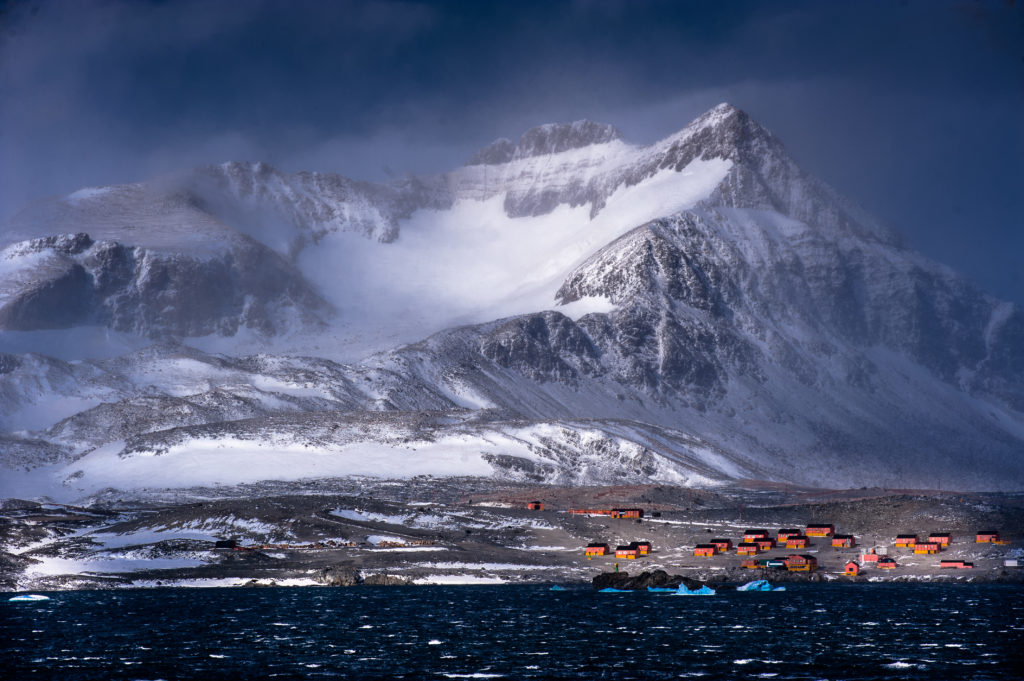
Take a Wide Angle Lens
It seems a given that you would take a wide-angle lens on any landscape photography shoot. That certainly holds true for photographing mountains. A wide angle works well both down low, looking at the mountain landscapes or up high, giving an all-encompassing view of the mountain landscape.
One of the key elements in any landscape photography is depth. Whilst a telephoto will give us compressed depth, a good wide angle will give us dramatic depth all the way from the foreground to the jagged peaks in the background. A wide angle will lead our eye through the mountain landscape, but to do that they need one vital element., something in the foreground.
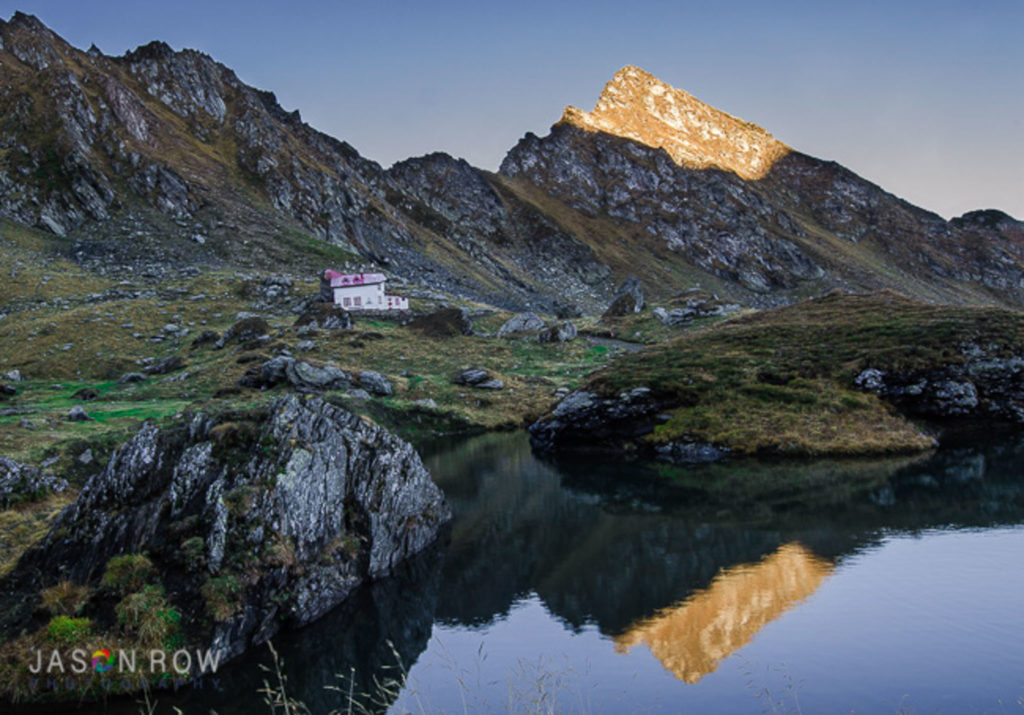
Foreground Interest Is Vital
In any landscape photography, a good foreground is important. It is especially so when shooting stunning mountain landscapes. You need to pick your foreground carefully. It might be a series of interesting boulders that act as leading lines, perhaps a fallen tree or branch that points towards the peaks of your subject. Your foreground is the focal point that will lead the eye into the shot.
Mountain landscape photography is about leading the eye through the scene to the peaks in the distance; without a good foreground, your images will look very flat.
Depth in landscape photography not only comes from having an engaging foreground interest. It will also require a deep depth of field.
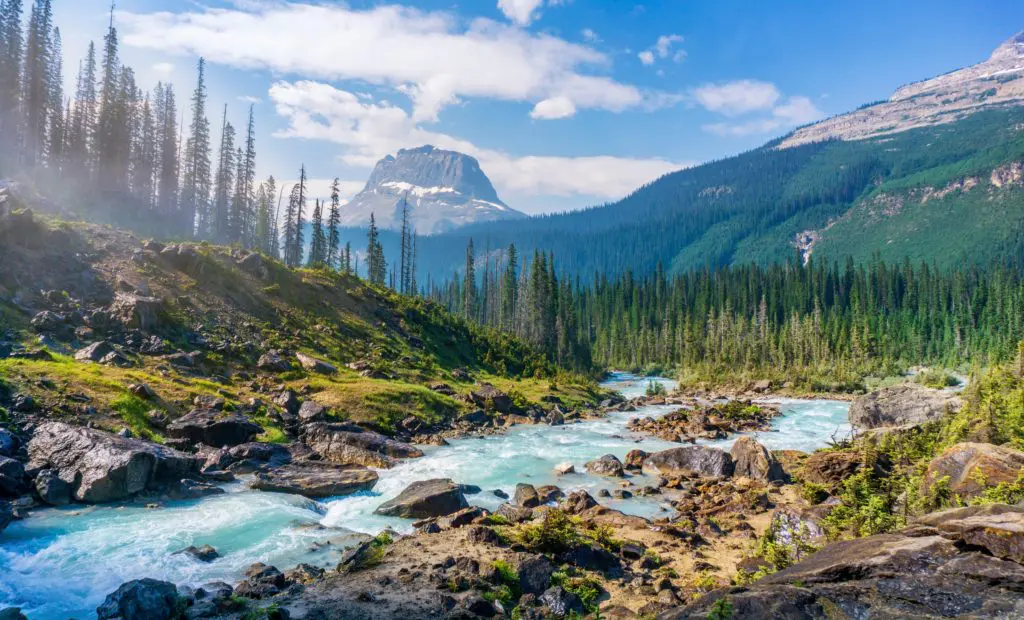
Deep Depth of Field
In order for your eye to be sucked into those mountain photos, there needs to be a deep depth of field. Your foreground, as well as being close to the camera, needs to be in sharp focus. Your background also needs to be extremely sharp so that the eye can pick out the details in the mountain peaks.
With a wide-angle lens, this will be easier. However, there is one really useful technique that will help you maximise depth of field in any landscape photography, the hyperfocal distance.
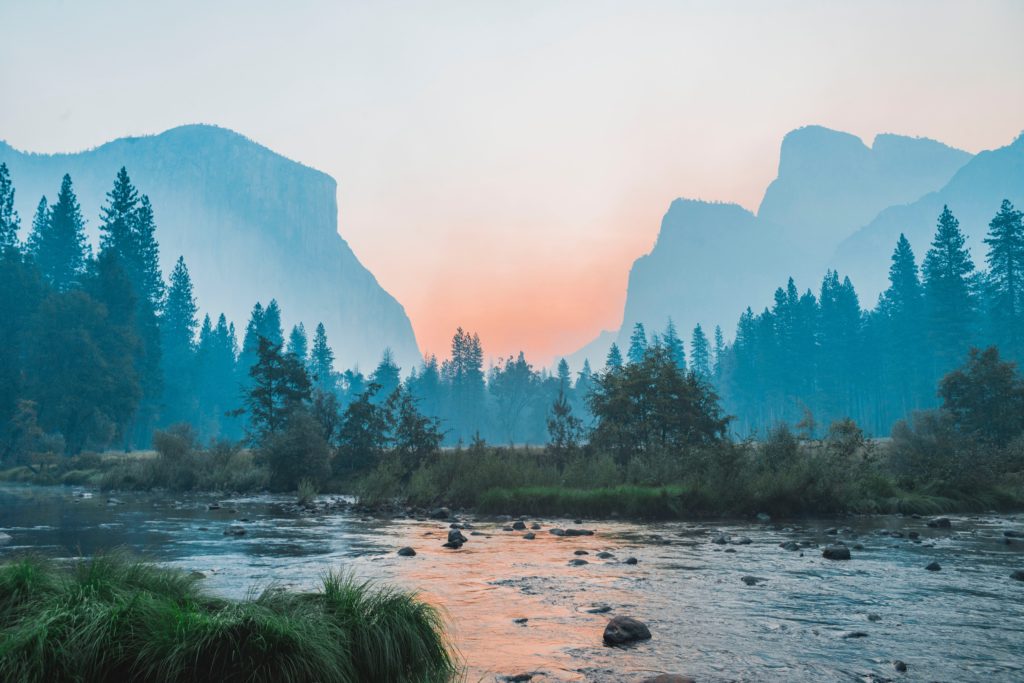
Understanding Hyperfocal Distance
The hyperfocal distance is the closest distance at which a lens can be focused while keeping objects at infinity, acceptably sharp. There are some complex maths behind this rule, but fortunately, this being the 21st Century, we now have apps with hyperfocal tables.
In mountain landscape photography, using a hyperfocal distance app, we can tune our focus to maintain the deep depth of field we require. The hyperfocal distance depends on the focal length and aperture. The wider the lens and smaller the aperture, the closer to the camera our focus point will be. Unlike you might think, the hyperfocal distance, the point where you will actually focus, is not close to infinity, it’s actually a lot closer to the camera.
From that, it is apparent that for deep depth of field in mountain photography, we need a wider lens and a smaller aperture. There is a trade-off that we need to be aware of, though, diffraction. Getting beyond a certain aperture and diffraction can cause issues.
Focus Stacking
Whilst hyperfocal distance is a great tool, there is a newer technique available for landscape photography, focus stacking. This technique involves taking multiple images at the same exposure but varying the focus from the foreground to the background.
The resultant image is created by combining multiple shots in Photoshop to give a massive depth of field. This is a very useful way to get around diffraction limitations of your sensor. Some cameras provide automatic stack focus, but there are often using JPEGs rather than RAWs.
Exposure Bracketing
In the same vein as the focus stack technique, another really useful tip in mountain landscape photography is to exposure bracket. Whilst some landscape photographers may advocate the use of a graduated filter, these days, they can be easily replicated by exposure bracketing.
At its most simple you can bracket one shot for the foreground and one for the sky. However, you can further expand the dynamic range by making three to five images around the metered reading in 2/3rd or 1-stop intervals.
You can then use Lightroom or Photoshop to create an HDR image merge. Mountain images often have very high contrast, with brighter skies down to dark shadows. Exposure bracketing is a powerful way to capture the full dynamic range in your mountain landscape.
Scale Is Important
Mountain landscape photography requires scale. It’s very difficult in mountain photography to give your viewers a sense of the size of those peaks. Scale can come from a human element in the scene or it can come from nature.
Examples of human elements might be a small barn at the base of the mountain or a boat on a lake surrounded by mountains. Some of the best natural elements to give scale in mountain landscape photography are trees.
Not all mountain scenes will have human elements, but many may have trees. We are conditioned to know the approximate height of a tree, so by including one when shooting mountains, we can give the viewer a much better sense of scale.
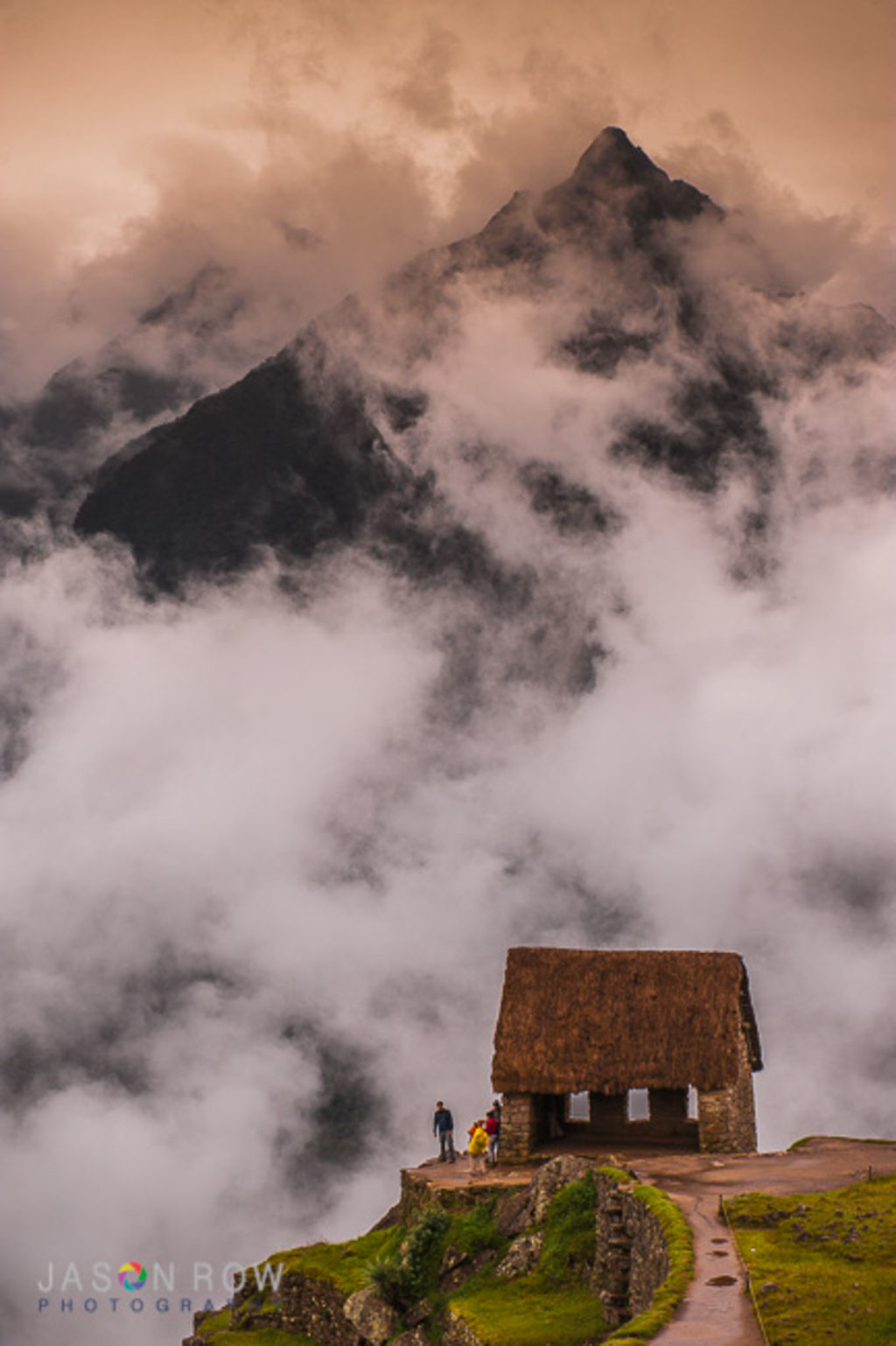
Use A Tripod
We often have a love, hate relationship with tripods, especially so in mountain landscape photography. The thought of lugging our three-legged friend up hundreds, if not thousands of meters just to get a shot can seem daunting.
However, shooting mountain ranges requires a deep depth of field. That means smaller apertures and of course, slower shutter speeds. Not only that, but as we have already seen, focus is vital and using a tripod will make your mountain photos easy to compose and shoot. Invest in a carbon fibre tripod to lighten the load on your mountain landscape photography shoots.
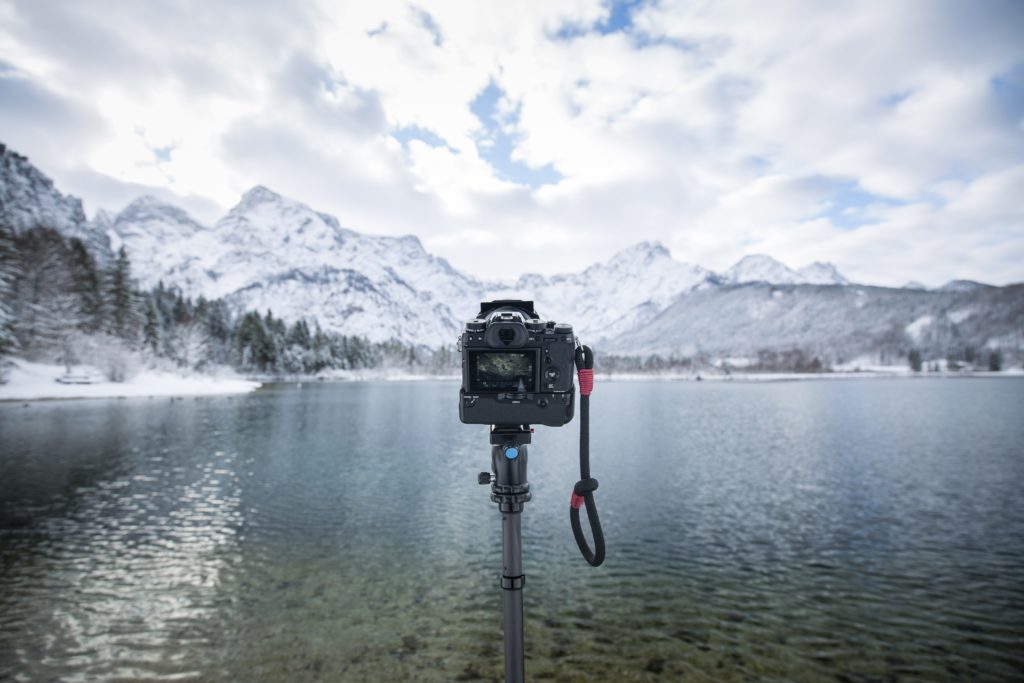
Water And Reflections
Stunning mountain photography quite often includes water. This might be in the form of snowy peaks, or it might be a cold mountain lake at the base. Very often, mountain lakes are still, the mountains providing shelter to the water. This gives us the opportunity to shoot great reflections.
It’s worth using a polarizing filter when shooting reflections. Whilst this might sound a little oxymoronic, by rotating the polarizer, you can allow some underwater elements to be included whilst maintaining the reflections of the mountains in the water.
Mountain reflections are ideally suited to symmetrical compositions whereby you place the horizon dead centre of the image rather than on a third.
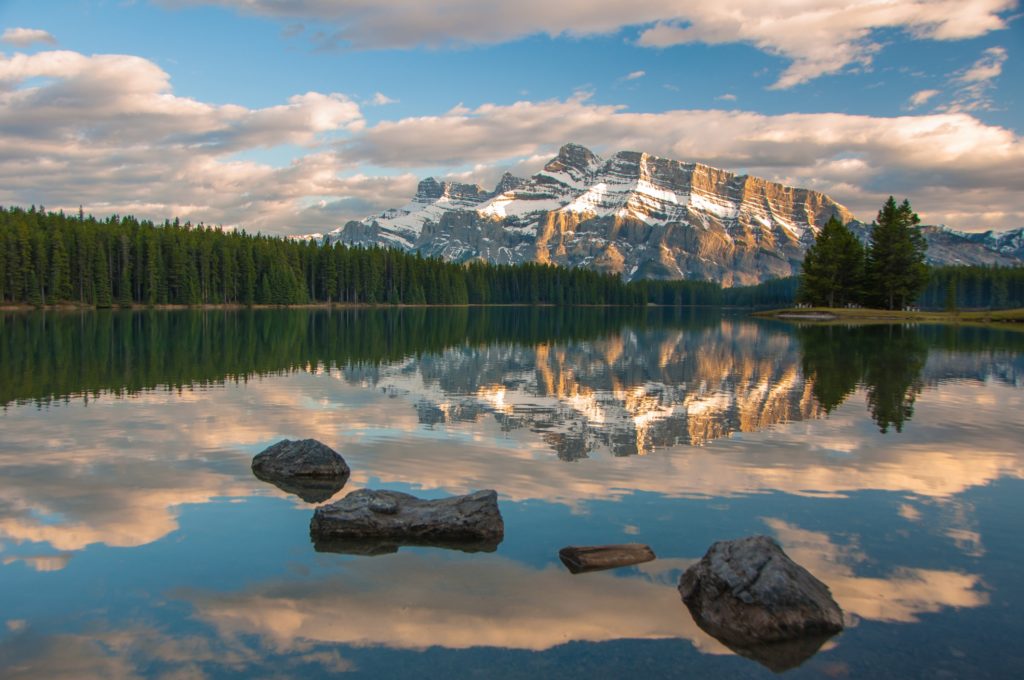
Weather Conditions
You will not get the true beauty of the mountains on a bright sunny day. A cloudless blue sky will make your mountain photographs look flat and lacking in depth.
The best light is often found in cloudy conditions. Not flat overcast clouds but skies that have multiple different cloud types at different levels. Some of these may be partially obscuring the peaks, adding further depth to your shots.
Storm clouds in the mountains often give amazing light. Also, the shadows that clouds cast on the mountain peaks helo to create further depth to your image.
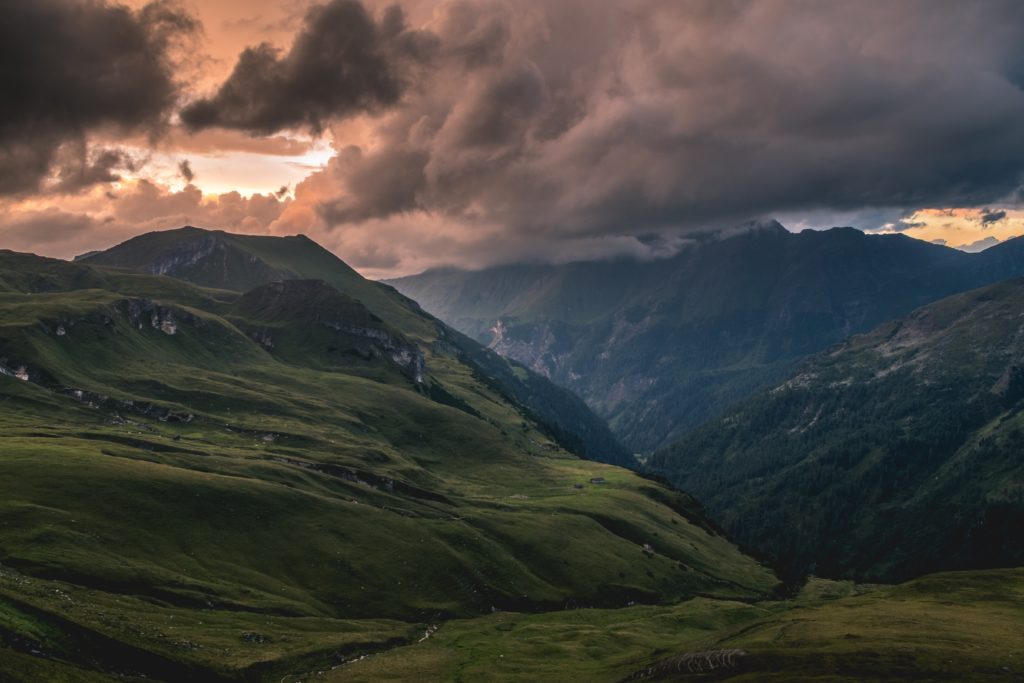
The Golden Hour
Like many genres of photography, taking pictures in the mountains is best done during the golden hour and also the blue hour. If you are into a little wilderness camping, the sunrise can be an amazing time for shooting mountains. The air will often be still, the light very clear and very yellow.
There is often less haze giving you unparalleled views, however, very often, mist and fog will sit in lower-lying areas adding to the depth and mystery of your mountain shots.
The sunset time is often a bit hazier, but this can also look good. The mountains will cast long soft shadows on each other, further enhancing the sense of depth. Here a telephoto is a good option, picking off the light and shade of the peaks.
The Blue Hour
Like the golden hour, the blue hour can be a stunning time in landscape photography. Both the morning and evening blue hours can give incredible violet tints to the sky over the mountains. Add in some wispy clouds, and you can get some truly amazing views. Mountain ranges at higher latitudes will have much longer twilights giving you longer in which to capture amazing images. If you are in a mountain range closer to the equator, you will find that twilight happens very quickly.
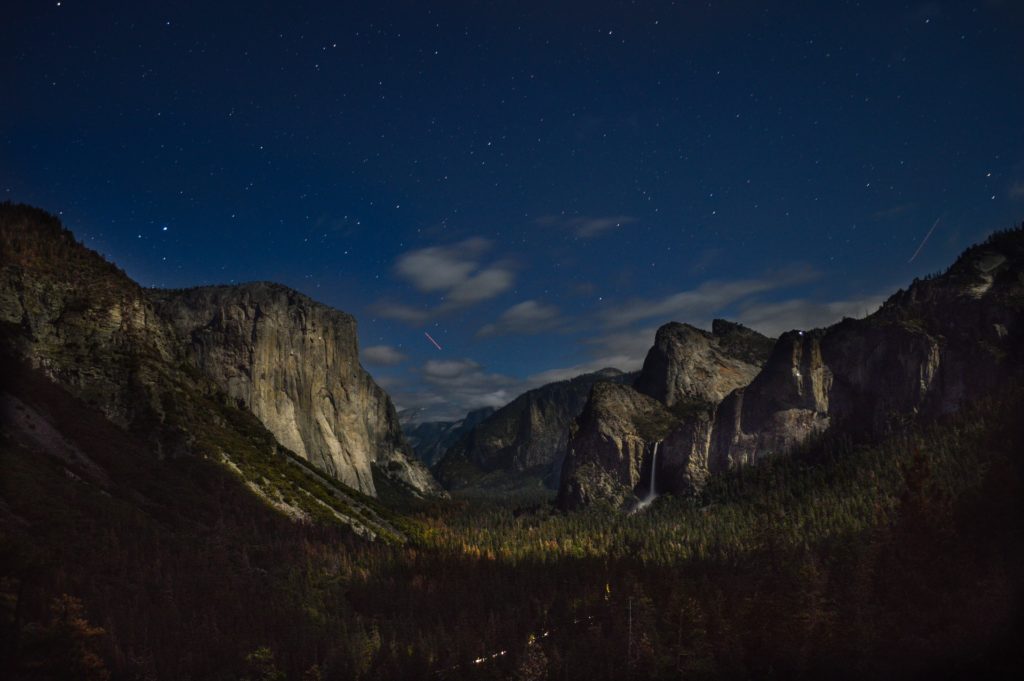
Composition In The Mountains
Mountain landscape photography lends itself to many different types of compositions. From the obvious leading lines and thirds that we have mentioned to more complex compositions such as negative space and the golden spiral.
A foreground subject is vital if using a wider lens. The classic compositions at this length are lines, frames, and symmetry.
For longer focal lengths, you can isolate subjects to give negative space and even colour contrast. As with many nature images, mountains tend to work better with more simple compositions. Try to limit the compositional rules to one or two rather than stacking many different rules. Your primary focal point should always be one of the peaks.
There’s An App For That
There are many apps that can help us with stunning mountain photography. Chief amongst them are the ephemeris-type apps. These will plot the direction of the light, time of blue and golden hours and provide calculators for things like hyperfocal distance. They are invaluable tools for preplanning and whilst on location.
Look for an ephemeris app that will take into consideration the height of the surrounding land. This is vital as it will help you see where the light will rise above the peaks. Apps like Photopills combine ephemeris with tools to calculate where stars will rise, which is ideal for night sky photography in the mountains. These are apps that no landscape photographer should be without.
Weather apps are another great tool. Apps like Dark Sky allow you to see multiple different weather options for the hours ahead. These include percentage cloud cover and the chance of rain or snow, ideal for any nature photos.
Hiking apps will help you plan and find hiking trails to your chosen locations eliminating the chances of getting lost and losing the photos.
Mountains Are Visually Stunning
Mountain landscape photography is both tough and incredibly rewarding, giving us unique photos.
There is incredible variety in mountain photography. The soft eroded peaks of the Scottish highlands are a landscape photography playground. In a similar vein are the fairly low peaks of the Great Smoky Mountains.
For higher, more craggy peaks there are the almost surreal and most jagged mountains of Italian Dolomites or the mountains of the Grand Teton National Park in the United States.
Lenses of different focal lengths are key to beautiful mountain photography. Telephotos and wides are equally at home in this genre of landscape photography.
An understanding of stacking both focus and bracketing will aid your shots, as will a polarizer. Graduated filters are not necessarily needed as reducing a sky can be done just as capably in post-production.
If you are aspiring to shoot some amazing landscape photography, then a trip to the mountains will bring you some stunning results.


